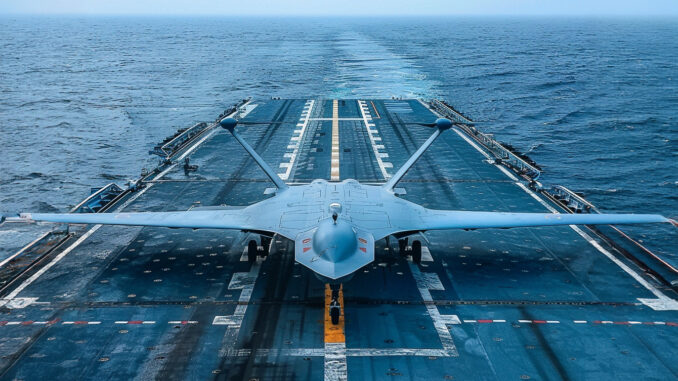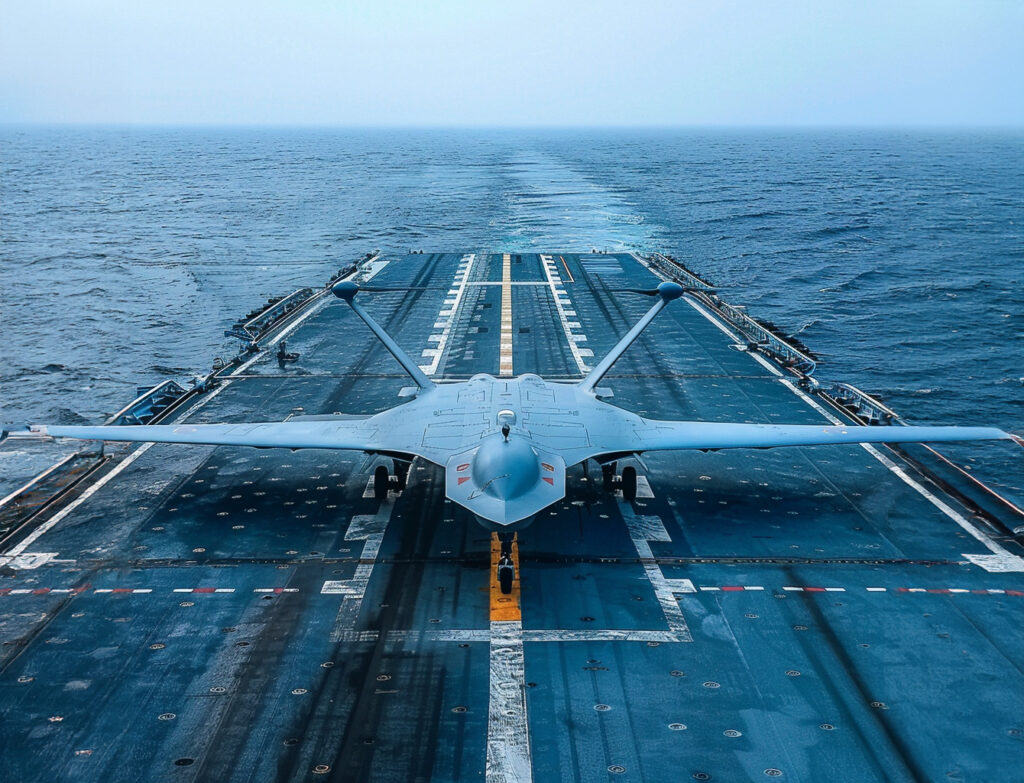
Technical analysis of China’s new aircraft carriers dedicated to UAVs, their strategic role and military implications.
China is building aircraft carriers specially designed to operate drones (UAVs) rather than manned aircraft. These ships will be used for reconnaissance and attack missions far from the coast, while training with the Fujian aircraft carrier to test their effectiveness against forces similar to those of the United States. This new capability aims to develop a unique form of naval warfare that the US does not yet possess, while confronting the potential threat of US nuclear submarines.
Background and development
China is currently building three small aircraft carriers specifically dedicated to the use of unmanned aerial vehicles (UAVs). Unlike traditional aircraft carriers, these ships are not designed to operate piloted aircraft. China’s dedicated UAV carriers are being built in a shipyard up the Yangtze River, a long way from the large shipyards in Shanghai.
These ships are equipped to carry dozens of armed drones, mainly intended for one-way attacks, as well as a smaller number of reconnaissance drones to monitor the airspace around the carrier.
Benefits:
- Projection capability: The ability to deploy UAVs far from the coast allows China to project its military power into remote areas without risking human lives.
- Operational flexibility: UAVs can be used for a variety of missions, including reconnaissance, surveillance and targeted attacks, offering great tactical flexibility.
Disadvantages:
- Capability limitations: These ships cannot operate manned aircraft, which limits their versatility compared with traditional aircraft carriers.
- Technological dependence: UAV performance is highly dependent on on-board technology and resistance to electronic countermeasures.

Strategic and military implications
The introduction of UAV carriers would enable China to strengthen its surveillance and attack capabilities in international waters. Currently, land-based drones are used to patrol coastal waters, but the aircraft carriers will allow these operations to be extended further out to sea.
Consequences:
- Increased operational range: UAVs can cover greater distances without the need for refuelling, increasing the range of Chinese military operations.
- Reinforced naval presence: These ships strengthen the Chinese navy’s presence in strategic areas such as the South China Sea.
Military training and exercises
The new drone carriers will be used in training exercises with the Fujian, China’s first modern aircraft carrier. These exercises are designed to simulate combat scenarios against forces similar to those of the US Navy. The Fujian, with a displacement of 80,000 tonnes, is slightly smaller than the American aircraft carriers, but is still very capable.
Benefits:
- Realistic simulation: By using the Fujian as an adversary, China can better understand the effectiveness of its drone carriers against US vessels.
- Skills enhancement: These exercises enable crews to be trained and tactics for using UAVs in combat situations to be perfected.
Disadvantages:
- Risk of self-discovery: Exercises can also reveal weaknesses in drone carriers, giving valuable information to potential adversaries.
Threat from US nuclear submarines
UAV carriers must also take into account the threat of American nuclear submarines (SSNs). These submarines, capable of staying submerged for months at a time, have advanced sensors to detect and track surface vessels, including Chinese aircraft carriers and drone ships.
Consequences:
- Vulnerability to torpedoes: Despite their ability to deploy drones, these ships remain vulnerable to torpedo attacks from nuclear submarines.
- Continuous surveillance: The presence of US submarines in operational areas will require Chinese ships to maintain constant surveillance and develop effective countermeasures.
China’s new drone aircraft carriers represent a major innovation in naval strategy, offering extensive reconnaissance and attack capabilities far from the coast. However, they have yet to prove their effectiveness in the face of the challenges posed by nuclear submarines and the need for intensive training to achieve operational standards. China continues to experiment and develop these capabilities, aiming to fill the gaps and strengthen its position in international waters.
War Wings Daily is an independant magazine.